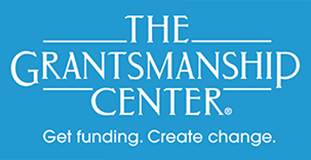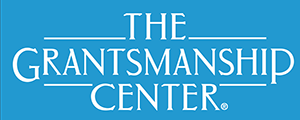
The New Reality for Nonprofits in 2026
Across the country, nonprofit leaders are feeling the squeeze. Budgets are stretched, community needs are rising, and the competition for grant funding has grown more intense.
According to recent reports from the Urban Institute and Candid, nearly 60% of U.S. nonprofits are seeing flat or reduced government funding, while foundation giving is expected to increase only slightly in the coming year — mostly to organizations already known to funders.
In short: the money hasn’t disappeared, but it’s moving more selectively. This year’s funding landscape rewards clarity, readiness, and results. The organizations that will secure awarded grants are those that can demonstrate exactly how their programs create measurable community change — and that’s something you can prepare for right now.
1. Lead With Purpose, Not Panic
When funding feels uncertain, the instinct is to scramble — to apply for more grants, more quickly. But that scattershot approach often produces weaker proposals and wasted effort.
Instead, step back and revisit your core purpose:
- What change are you trying to create?
- Who benefits, and how will life be different for them?
- How will you know you’ve succeeded?
Funders are drawn to clarity, not urgency. A well-defined purpose helps your proposal rise above the noise and shows that your organization is mission-driven, not crisis-driven.
2. Strengthen Your Case—With Data and Stories
In tighter markets, strong data and strong storytelling work hand in hand. Data proves that your program addresses a real, measurable problem. Stories show that the data represents real people and real outcomes. Combine both in your proposal:
“Our youth program increased on-time high school graduation by 18% last year — and that number represents 43 students now enrolled in college.”
That balance between quantitative and qualitative impact builds credibility and connection — exactly what funders look for when awards are more competitive.
3. Diversify and Align, Don’t Chase
It’s tempting to pursue every available grant, but alignment matters more than abundance.
A smaller number of well-matched, well-developed proposals will yield more success than dozens of generic submissions.
Start by mapping your funders:
- Who has funded organizations like yours before?
- Which grantmakers emphasize outcomes similar to yours?
This kind of alignment signals professionalism and readiness—qualities funders increasingly expect in 2026.
4. Build Organizational Readiness
When funders evaluate proposals, they’re not just assessing your idea — they’re assessing your capacity to deliver.
Show that your organization:
- Has the right team and partners in place.
- Follows clear financial and reporting practices.
- Plans for sustainability beyond the grant period.
If any of these areas need attention, make that your priority this quarter. Funders are more likely to award grants to organizations that demonstrate steady leadership, even in uncertain times.
5. Invest in Skills That Outlast a Grant Cycle
Grantsmanship isn’t about chasing dollars — it’s about building skills that last.
Organizations that continually strengthen their proposal planning, logic models, and evaluation frameworks can adapt quickly to shifting trends.
That’s why our Grantsmanship Training Program focuses on the fundamentals that never go out of style:
- Designing fundable, mission-aligned programs.
- Communicating measurable outcomes clearly.
- Writing proposals that reflect both logic and heart.
When the funding environment gets tough, training isn’t optional — it’s your most reliable investment in sustainability.
The Bottom Line
The funding landscape may be tightening, but opportunity still exists for organizations that plan strategically, stay focused on outcomes, and present well-structured proposals grounded in community need.
2026 isn’t a year for panic — it’s a year for preparation.
And preparation is what turns purpose into funding, and funding into change.
Ready to Strengthen Your Grant Readiness?
Join our upcoming Grantsmanship Training Program and learn how to build fundable programs from the ground up.



